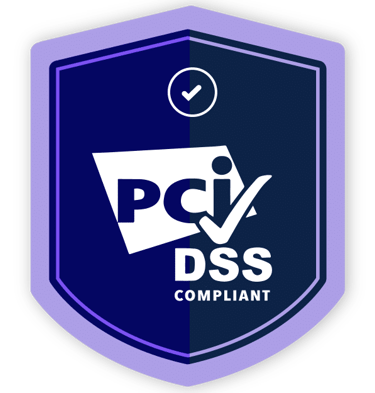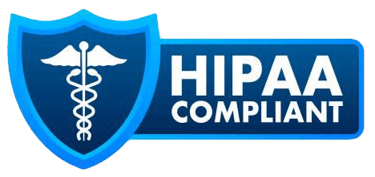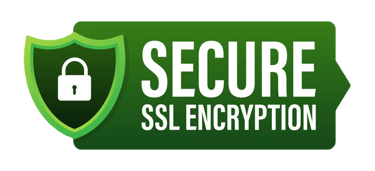The Importance of Interdisciplinary Group (IDG) Meeting Documentation
Accurate and comprehensive Interdisciplinary Group (IDG) meeting documentation is vital for hospice agencies to maintain Medicare compliance, support coordinated patient care, and demonstrate adherence to the Conditions of Participation.
11/12/20255 min read
In hospice care, the Interdisciplinary Group (IDG) serves as the backbone of patient-centered care, ensuring that every aspect of the patient's physical, emotional, social, and spiritual needs is met. Under the Medicare Conditions of Participation (CoPs), hospices are required to conduct regular IDG meetings to review and update each patient’s plan of care. However, the value of these meetings extends far beyond compliance—it is in the documentation where a hospice demonstrates its quality of care, regulatory alignment, and clinical accountability.
This article explores the essential role of IDG documentation in hospice operations, its compliance requirements, best practices, and the consequences of poor documentation—all aligned with 42 CFR §418.56 of the Medicare CoPs.
1. Understanding the Role of the Interdisciplinary Group (IDG)
The IDG is composed of key professionals responsible for managing the holistic needs of each patient. According to the Medicare CoPs, the IDG must include:
Physician (Medical Director or Attending Physician) – Oversees medical care and certifies terminal prognosis.
Registered Nurse (RN) – Leads clinical coordination, symptom management, and nursing assessments.
Social Worker (MSW) – Provides emotional and psychosocial support to patients and families.
Spiritual Counselor – Addresses spiritual and existential concerns.
Additional Members – Volunteers, therapists, and counselors may participate based on the patient’s needs.
The IDG collaboratively develops, reviews, and updates the plan of care (POC) to ensure it remains appropriate and responsive to the patient’s evolving condition.
2. Medicare Conditions of Participation (CoPs) Requirements
Under 42 CFR §418.56, hospices must ensure that:
The IDG establishes the individualized plan of care for each patient.
The plan reflects measurable outcomes and interventions tailored to the patient’s goals.
The plan is reviewed and updated at intervals consistent with the patient’s condition, but no less frequently than every 15 calendar days.
The documentation clearly supports all care decisions and clinical changes discussed during the IDG meetings.
This documentation serves as the legal record that verifies compliance, supports claims for reimbursement, and validates quality of care.
3. Why IDG Documentation Matters
3.1 Ensures Continuity and Quality of Care
Proper IDG documentation ensures that all team members—clinical and non-clinical—are aligned in their understanding of the patient’s needs and goals. It fosters collaboration, minimizes miscommunication, and creates a clear roadmap for care delivery.
3.2 Demonstrates Regulatory Compliance
Surveyors from the Centers for Medicare & Medicaid Services (CMS) and state agencies often review IDG records to assess compliance. Complete and well-documented IDG notes reflect adherence to CoPs and reduce the risk of deficiencies, condition-level findings, or penalties.
3.3 Supports Accurate Billing and Reimbursement
Accurate IDG documentation validates the services billed to Medicare. Discrepancies between care provided and documented notes can trigger audits, claim denials, or payment recoupments. The IDG record provides evidence that care was reasonable, necessary, and aligned with the hospice philosophy.
3.4 Enhances Clinical Communication
The IDG meeting is not only an administrative requirement—it’s a clinical communication tool. Detailed notes help ensure continuity of care, particularly when multiple team members serve the same patient across different disciplines and visits.
4. Components of Strong IDG Documentation
4.1 Patient Identification
Each record should begin with accurate patient demographics—name, date of birth, diagnosis, admission date, attending physician, and certification period.
4.2 Meeting Attendance
The documentation must list all IDG attendees and their credentials. Each member’s participation demonstrates multidisciplinary collaboration, as required by the CoPs.
4.3 Clinical Summary and Updates
Include a clear summary of the patient’s current status:
Pain and symptom management
Medication adjustments
Functional status changes
Psychosocial and spiritual concerns
Family or caregiver updates
4.4 Plan of Care (POC) Review
The IDG should verify that each POC problem, goal, and intervention remains relevant. Updates or new interventions must be documented with measurable outcomes.
4.5 Physician Orders and Approvals
Any new orders or changes recommended by the IDG must be documented and signed by the hospice physician, ensuring that medical oversight is evident.
4.6 Interventions and Accountability
Each discipline must document its planned interventions and who is responsible for follow-up actions. For example:
RN: Adjust morphine dosage to manage breakthrough pain.
MSW: Provide caregiver stress assessment next visit.
Chaplain: Continue grief counseling sessions.
5. Common Documentation Deficiencies Found During Surveys
Surveyors frequently identify documentation-related deficiencies that jeopardize compliance. Some of the most common include:
Missing IDG meeting dates or attendance logs
Incomplete or outdated plans of care
Lack of measurable goals or outcomes
Failure to document physician review or approval
Missing signatures of participants
Inconsistent updates across disciplines
Late or missing documentation within the required 15-day cycle
Each of these issues can lead to Condition-Level Deficiencies (CLDs) or standard-level citations, directly affecting the hospice’s survey outcome.
6. Best Practices for IDG Documentation
6.1 Establish a Standardized Template
Using a uniform IDG template ensures that all critical elements are captured consistently. Templates should align with the CMS hospice CoPs and be integrated into the agency’s EMR system.
6.2 Train Staff on Documentation Requirements
Regular training helps staff understand what surveyors look for in IDG notes and how to document effectively. The IDG should emphasize accuracy, clarity, and measurable outcomes.
6.3 Conduct Internal Audits
Monthly or quarterly audits of IDG documentation help identify gaps early. This proactive measure supports ongoing compliance and prepares the agency for unannounced surveys.
6.4 Incorporate QAPI Oversight
The Quality Assessment and Performance Improvement (QAPI) program should analyze IDG documentation trends to identify systemic issues, such as late entries or missing physician approvals.
6.5 Maintain Timely Documentation
Ensure that IDG notes are completed promptly—preferably within 24 to 48 hours after the meeting. Delays may suggest operational inefficiency and compromise the validity of the records.
7. The Role of Technology in IDG Documentation
Modern Electronic Medical Record (EMR) systems can significantly improve IDG documentation by:
Automating reminders for 15-day IDG reviews
Standardizing templates for consistent input
Integrating POC updates and discipline notes
Generating compliance reports for audits
Allowing electronic signatures for physicians and IDG members
These technological tools not only save time but also enhance compliance accuracy, reducing the risk of errors that could lead to survey deficiencies.
8. Linking IDG Documentation to Quality Outcomes
Hospices that maintain strong IDG documentation practices often demonstrate superior patient outcomes. When documentation accurately reflects clinical discussions and interventions, it enhances care coordination and patient satisfaction. Furthermore, CMS’s Hospice Quality Reporting Program (HQRP) depends on data integrity, much of which originates from IDG documentation.
Effective IDG records support metrics such as:
Timely initiation of pain management
Reduced unnecessary hospitalizations
Improved caregiver satisfaction
Alignment of care with the patient’s goals and values
Ultimately, comprehensive documentation is a reflection of a hospice’s commitment to excellence and patient dignity.
9. The Compliance Connection: Documentation as a Defense
During CMS or state audits, IDG documentation is one of the most scrutinized areas. Surveyors evaluate whether each patient’s plan of care reflects interdisciplinary input and medical oversight. In the event of an Additional Development Request (ADR) or Targeted Probe & Educate (TPE) audit, IDG notes can serve as crucial evidence that care decisions were appropriate and consistent with hospice eligibility and prognosis.
Incomplete documentation, on the other hand, can expose a hospice to:
Payment denials
Corrective action plans
Sanctions or recertification delays
Termination from the Medicare program
Thus, the IDG record is not just a compliance document—it is the agency’s defensive shield in regulatory and billing audits.
10. Conclusion: Building a Culture of Documentation Excellence
The Interdisciplinary Group meeting documentation is much more than a regulatory checkbox; it is a cornerstone of hospice quality, compliance, and integrity. Accurate and timely IDG notes demonstrate to CMS, patients, and families that the agency is committed to delivering coordinated, compassionate, and compliant care.
Hospices should continually refine their documentation practices through staff education, internal auditing, and QAPI integration. By maintaining a culture of documentation excellence, agencies can protect their certification status, optimize reimbursement, and most importantly, honor the dignity and comfort of every patient served.
Partner with HealthBridge for Compliance and Documentation Support
At HealthBridge, we specialize in guiding hospice and home health agencies through the complexities of Medicare Conditions of Participation, IDG documentation, QAPI programs, and compliance audits. Our consulting and management solutions help your agency build stronger systems, reduce deficiencies, and maintain operational excellence.
Contact HealthBridge today to ensure your IDG documentation meets and exceeds CMS standards—empowering your team to focus on what truly matters: quality patient care.

Some or all of the services described herein may not be permissible for HealthBridge US clients and their affiliates or related entities.
The information provided is general in nature and is not intended to address the specific circumstances of any individual or entity. While we strive to offer accurate and timely information, we cannot guarantee that such information remains accurate after it is received or that it will continue to be accurate over time. Anyone seeking to act on such information should first seek professional advice tailored to their specific situation. HealthBridge US does not offer legal services.
HealthBridge US is not affiliated with any department of public health agencies in any state, nor with the Centers for Medicare & Medicaid Services (CMS). We offer healthcare consulting services exclusively and are an independent consulting firm not affiliated with any regulatory organizations, including but not limited to the Accrediting Organizations, the Centers for Medicare & Medicaid Services (CMS), and state departments. HealthBridge is an anti-fraud company in full compliance with all applicable federal and state regulations for CMS, as well as other relevant business and healthcare laws.
© 2025 HealthBridge US, a California corporation. All rights reserved.
For more information about the structure of HealthBridge, visit www.myhbconsulting.com/governance
Legal
Resources
Based in Los Angeles, California, operating in all 50 states.






